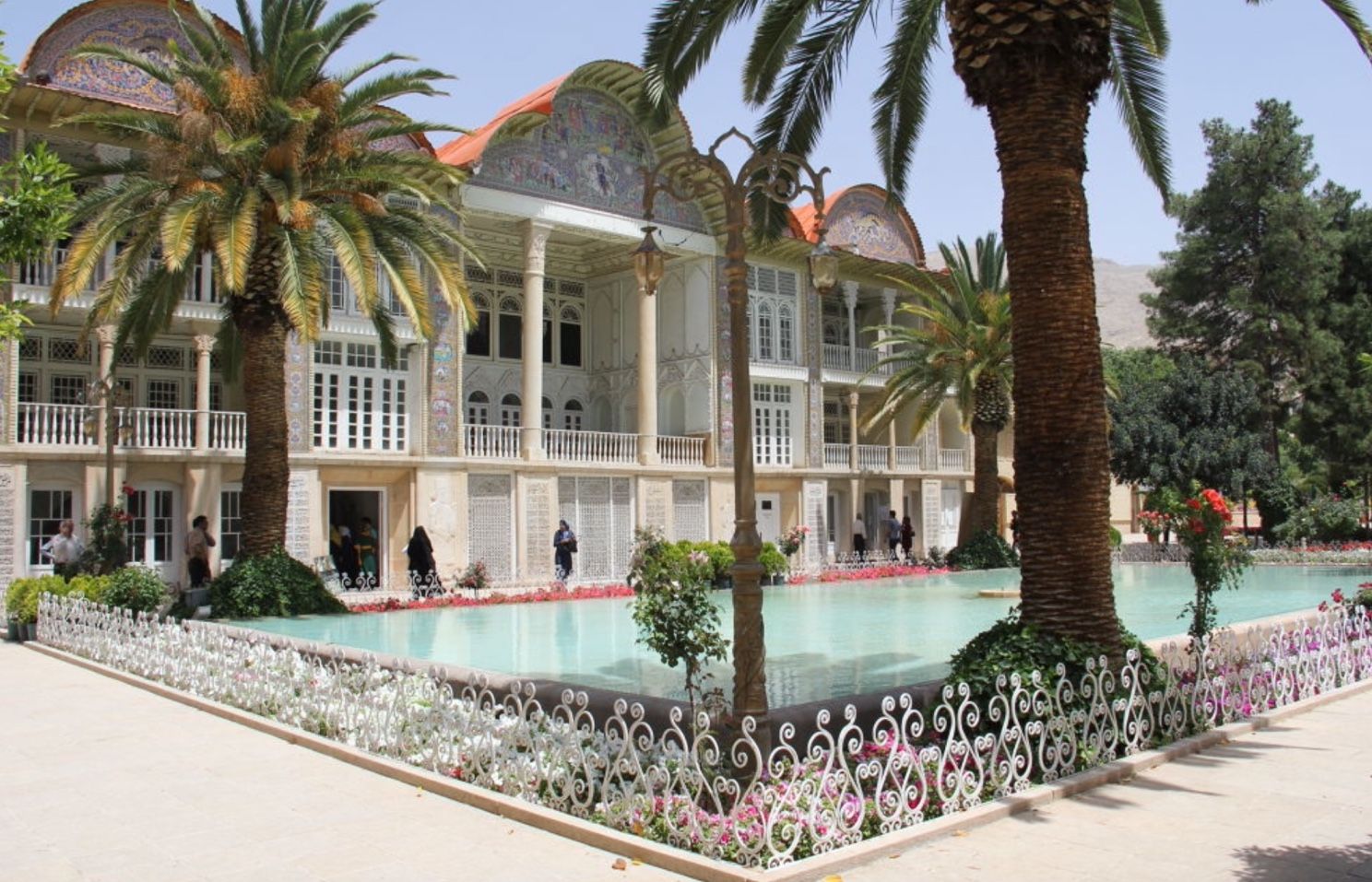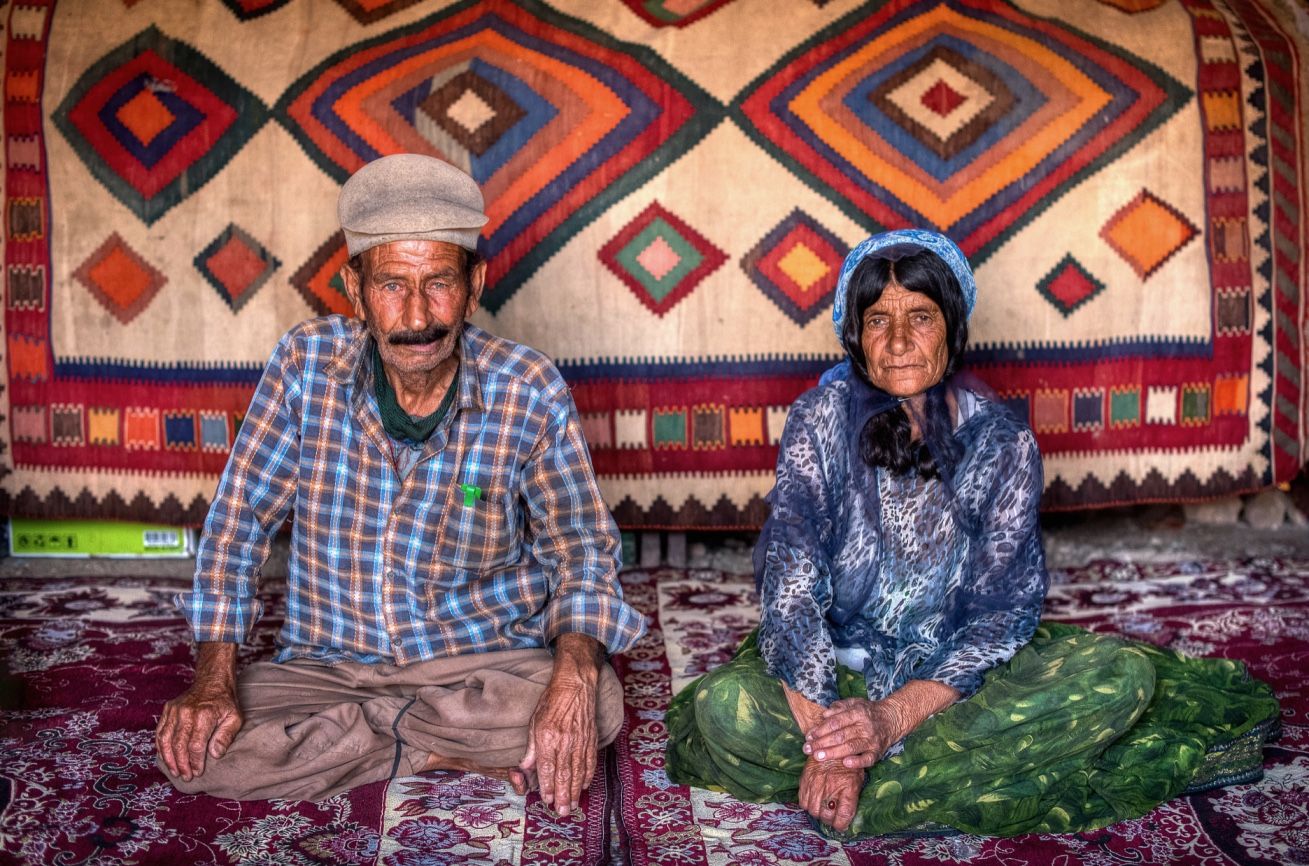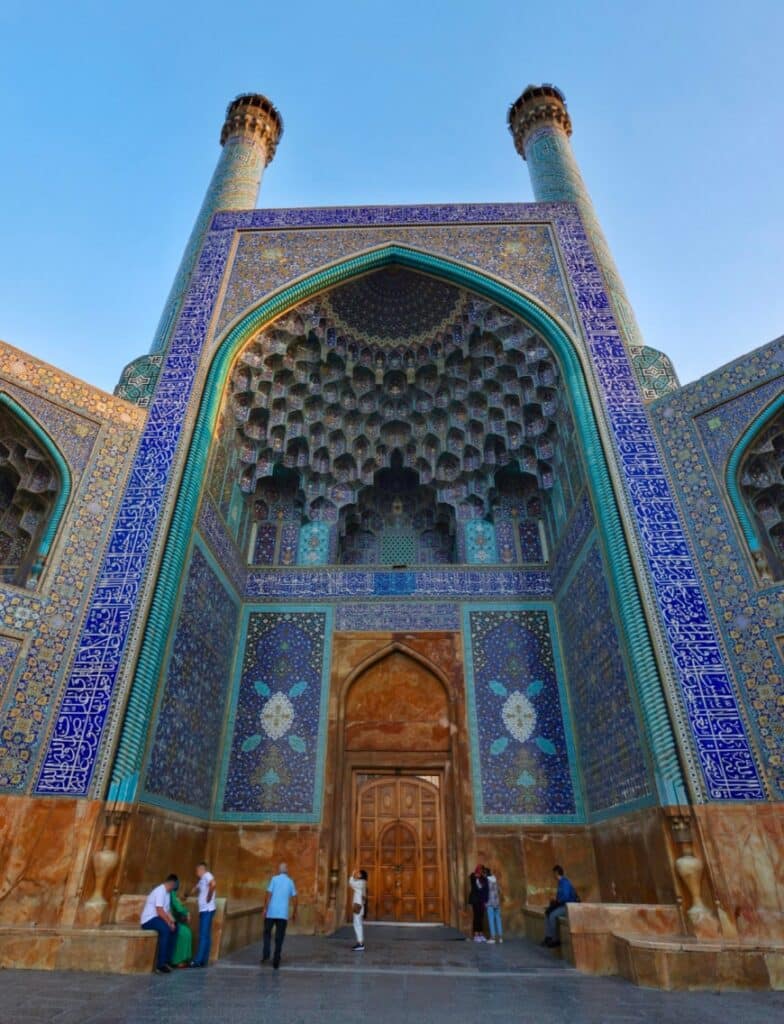Best Things to do in Shiraz, Iran (City Of Hafez & Saadi)
Shiraz will keeps you busy for few days, it’s a place for unique things to do, a city of sophistication that has been celebrated as the heartland of Persian culture for more than 2000 years. Known as the Dar-ol-Elm (House of Learning), the City of Roses, City of Love and City of Gardens, Shiraz has become synonymous with education, nightingales, poetry and it’s centuries old wine.
It was one of the most important cities in the medieval Islamic world and was the Iranian capital during the Zand dynasty (AD 1747–79), when many of its most beautiful buildings were built or restored.
- Check out our Iran packages tours
This is a city of poets and home to the mausoleum of Hafez and Sa’di, themselves major pilgrimage sites for Iranians. Shiraz is also home to splendid gardens, exquisite mosques and whispered echoes of ancient heritage that reward those who linger longer than it takes to visit nearby Persepolis.
Among all the tourist sites, attractions and many of it’s big parklands, Shiraz’s agreeable climate, set as it is in a fertile valley once famed for its vineyards, makes it a pleasant place to visit (except at the humid height of summer or the freezing depths of winter).
Where is Shiraz on the map of Iran?
Shiraz, a historic city in southern Iran, lies about 930 km south of Tehran, 440 km southeast of Esfahan, and 300 km south of Yazd. Surrounded by mountains, it serves as a cultural hub and a gateway to famous sites like Persepolis and the Zagros Mountains.
The Best Things To Do In Shiraz (Must-Have Experiences)
Shiraz offers plenty of things to do and please to visit if you’re into Persian arts, from fine mosaics and silverware to carpet weaving. This ancient city boasts a rich history and culture, reflected in landmarks like Persepolis (a UNESCO site), the Tomb of Hafez, and Nasir al-Mulk Mosque.

1. Vakil Bazaar
In every Iranian city, the bazaar is the heart of daily life—selling groceries, fueling political debates, and showcasing local crafts. Shiraz’s bazaar stands out with its vibrant atmosphere, making it a must-visit for tourists.
The energy here comes partly from the Qashqai nomads of the nearby mountains. Their influence is everywhere, from the colorful dresses of Qashqai women to the intricate traditional carpets on display.
Even if you’ve explored other Iranian bazaars, Shiraz offers something unique. Dating back to the 11th century, its winding alleys and stunning courtyards invite you to wander and discover its hidden charms.
2. Masjed-e Vakil (Mosque)
Vakil Mosque in Shiraz stands out with its vibrant Qajar-era mosaic tiles and intricate floral patterns. Its peaceful courtyard offers a perfect spot to admire the craftsmanship.
Karim Khan initiated its construction, making it the only major mosque from the late Zand period. Located beside the bazaar entrance, it features two large iwans to the north and south, a grand courtyard lined with beautifully tiled alcoves and porches, and a stunning 75m by 36m vaulted prayer hall supported by 48 carved columns.
The mosque is in the heart of Vakil Bazaar, the mosque’s courtyard provides a quiet escape from the market’s bustle.
3. Hammam-e Vakil (Bathhouse)
While exploring the bazaar, visit the nearby Vakil Hammam. Similar to those in Kashan and Esfahan and slightly different from the Turkish bathhouse in Istanbul, this historical Hamam showcases stunning architecture. Though few still operate, they serve as fascinating museums.
Hammam-e Vakil in Shiraz is definitely worth a quick stop. Once a popular traditional restaurant, it closed when the kitchen threatened the building’s integrity. In 2008, it reopened as a modest carpet museum, though its future remains uncertain. If open, it’s worth stepping inside to admire this classic old bathhouse.
4.Madraseh-ye Khan
Founded in 1615 by Imam Gholi Khan, governor of Fars, this theological college once housed around 100 students. Earthquakes have severely damaged the original structure, leaving only its impressive entrance portal intact. The outer arch showcases rare stalactite molding, while the tiling—rich in red hues—sets it apart from those in Yazd and Esfahan.
Madraseh-ye Khan features intricate mosaic tiling, a peaceful courtyard, and a lush garden. It isn’t always open, but the caretaker might grant entry for a small tip.
5. Arg-e karim Khan
History lovers shouldn’t miss Karim Khan Fortress, one of Shiraz’s top attractions. Karim Khan, founder of the Zand dynasty, built it as his residence when he made Shiraz the capital of Iran. After the Qajars took over, the fortress later became a prison during the Pahlavi era.
Dominating the city center (Shahrdari SQ, right net to Bazaar), this imposing structure features four massive 14-meter-high circular towers. During the Zand dynasty, it formed part of a grand royal courtyard meant to rival Esfahan’s. Its thick walls and defensive towers still impress today. Located near the bazaar, it’s worth a short detour, even just to admire from the outside.
6. Mausoleum of Hafez
Iranians often say every home must have two books: the Quran and Hafez’s poetry—many would place Hafez first. More than a poet, Hafez remains a cultural icon, loved and quoted by almost every Iranian. His verses adapt to any perspective, whether social or political. A visit to Shiraz feels incomplete without stopping at his tomb.
Many believe Hafez’s poetry offers divine guidance. In moments of uncertainty, readers open his book at random, trusting the first verse they see to reveal an answer. Outside the tomb, fortune-tellers sell cards with Hafez’s verses, sometimes chosen by a parakeet just for you.
7. Aramgah-e Sa’di
While not as popular as Hafez’s tomb, the Aramgah-e Sa’di and its generous surrounding gardens are appropriate for a man who wrote so extensively about gardens and roses. It’s a tranquil place, with the tombstone housed in an open-sided stone colonnade built during the Pahlavi era. Nearby is an overpriced underground teahouse set around a fish pond that is fed by a qanat .
8. Shah-e Cheragh Shrine
The Mausoleum of Shah-e Cheragh honors Sayyed Mir Ahmad, brother of Imam Reza, who passed away in Shiraz in AD 835. A shrine first rose over his grave in the 14th century, making this one of Iran’s most significant Shiite pilgrimage sites, after Qom and Mashhad. The vast complex includes mosques, religious schools, prayer halls, and tombs, but its dazzling mausoleum remains the highlight.
Inside, thousands of mirrored tiles reflect light, creating a breathtaking spectacle. Pilgrims gather here to pay respects, making it an active religious site. Foreign visitors must join a guided tour, provided for free at the entrance after leaving their bags.
9. Nasir-ol-molk mosque
Near Madraseh-ye Khan, Nasir al-Molk Mosque stands as one of southern Iran’s most elegant and photographed landmarks. Built in the late 19th century, its deep blue and pink mosaic tiling creates a mesmerizing sight. The real magic happens at sunrise when light filters through the stained-glass windows, casting a breathtaking display of colors.
This stunning spectacle draws large crowds, making it tricky to capture a photo without people. Still, visiting remains an unforgettable experience. The mosque’s intricate exterior tiles, earning it the name “Pink Mosque,” are just as impressive as its glowing interior.
10. Eram Garden (Bagh-e Eram)
Originally built in the 13th century by Qashqai tribal leaders, the gardens later came under the ownership of the Qavam family, who also managed Narenjestan Gardens. Over the centuries, modifications and restorations shaped its current beauty, making it one of Shiraz’s finest green spaces.
Known for its towering cypress trees, Bagh-e Eram offers a peaceful retreat and a favorite gathering spot for young Shirazis. Hidden corners throughout the garden provide quiet escapes, while a picturesque pool enhances the serene atmosphere. The Qajar-era Eram Palace stands at its center, though it remains closed to visitors.
11. Narenjestan garden
I say it’s a must see in Shiraz. Bagh-e Naranjestan is the city’s smallest garden and is famous as the setting for the opulently decorated Naranjestan-e Ghavam pavilion, built between 1879 and 1886, as part of a complex owned by one of Shiraz’s wealthiest Qajar-era families. The pavilion’s mirrored entrance hall opens onto rooms covered in a breathtaking combination of intricate tiles, inlaid wooden panels and stained-glass windows.
12. Jahan Nama garden
After being closed for years, the lovely Bagh-e Jahan Nama was reopened in 2005. It doesn’t have the reputation of Bagh-e Eram, but if you just want to hang out in the greenery, don’t want to spend for the privilege and want it to be within walking distance of your hotel, come on down.
13. Bagh-e Nazar
Bagh-e Nazar and the octagonal Pars Museum at its centre are other notable Zand-era additions. It’s possible to walk around the garden and view the delightfully decorated pavilion where Karim Khan received foreign dignitaries. The interior is stunning, with the stalactite ceiling a particular highlight. Exhibits include Karim Khan Zand’s sword and indeed, his grave. Photography is not allowed.
14. Bogh’e-ye Sayyed Mir Mohammad
In the southeastern corner of the glittering Aramgah-e Shah-e Cheragh is the Bogh’e-ye Sayyed Mir Mohammad, which houses the tombs of two brothers of Mir Ahmad. The shrine has the typical Shirazi bulbous dome, intricate mirror work and four slender wooden pillars, leading some to describe it as more beautiful than Shah-e Cheragh.
15. Ali ebn-e Hamze shrine
The Imamzadeh-ye Ali Ebn-e Hamze stands as the tomb of Emir Ali, a nephew of Shah Cheragh who also died here while en route to Khorasan to help Imam Reza. The existing shrine was built in the 19th century after earthquakes destroyed previous incarnations. It has an eyecatching bulbous Shirazi dome, dazzling mirror work, stained-glass windows and an intricate, ancient wooden door. The tombstones around the courtyard, for which families of the deceased paid a small fortune, are also interesting.
16.Jameh-ye Atigh Mosque
Walking through the southeastern (back) entrance to the Shah-e Cheragh courtyard and turning right after about 50m leads to the ancient Jameh-ye Atigh Mosque. Dating from 894 this is Shiraz’s oldest Islamic structure, though most of what you see is from the late Safavid period onwards.
17. Quran gate (Darvaze Quran)
At the northern and main entrance to Shiraz is a ravine known as the Allah Akbar Gorge because people would praise Allah when they looked from here down to Shiraz below. This is also home to the Darvazeh-ye Quran, a modern and not desperately impressive structure built in 1949 to replace two earlier gateways. The gateway holds a Quran and travellers have traditionally passed underneath it before undertaking any journey.
18. Zinat ol-Molk’s mansion
Down a small lane beside the Orange Garden is the Khan-e Zinat ol-Molk, which was originally the private, andaruni area of the complex and is named after its last owner, the daughter of the builder Qavam. Today most of the finely decorated rooms are stuffed with exhibits in the Fars History Museum, while others serve as galleries for young Shirazi artists.
Popular day trips from Shiraz (Must Do)
There are a handful of 100% recommended places to see near Shiraz, the best day trips from Shiraz, including the awe-inspiring ruins of Persepolis, the ancient necropolis of Naqsh-e Rostam, and the picturesque Maharloo Pink Lake.
Persepolis & Naqsh-e Rostam
Cyrus the Great expanded the Persian Empire into the largest the world had seen, reaching from Eastern Europe to Central Asia and India. He selected Persepolis as the capital, and the city thrived until Alexander the Great captured and destroyed it.
Many travelers combine Persepolis with Naqsh-e Rostam for a day trip from Shiraz. Arriving early helps cover the vast site. Once a key city in an empire stretching from the Indus River to Ethiopia, Persepolis thrived under its original name, Parsa. It earned the Greek name Persepolis—meaning both “City of Persia” and “Destroyer of Cities”—after Alexander the Great’s army sacked it in 330 BC.
The towering rock tombs at Naqsh-e Rostam impress visitors, believed to house Darius II, Artaxerxes I, Darius I, and Xerxes I. Below, seven Sassanian reliefs depict dramatic scenes of imperial victories and royal ceremonies, with signboards explaining each in English.
Pasargadae (Tomb of Cyrus the Great)
Cyrus the Great initiated the construction of Pasargadae around 546 BC, transforming it into a significant city until Darius I established his grand palace at Persepolis. This remote plain features key attractions like the Tomb of Cyrus, Darius’ Garden, and Cyrus’ Private Palace. Visitors can explore the entire site in a couple of hours or even faster with private transport.
Travelers often visit Pasargadae on day trips or on a private tour, taking it as a convenient stop between Shiraz and Yazd or Isfahan. As a popular site and a symbol of Persian heritage, it attracts both tourists and Iranians who come to pay their respects, making it a highly recommended visit.
Zagros mountains & visit nomads of Qashqai tribes
Iran’s rich cultural diversity includes many ethnic minorities who still live a nomadic lifestyle. The Turkic Qashqai tribe, one of the largest remaining nomadic groups, moves through the Zagros Mountains near Shiraz.
As herders, the Qashqai migrate seasonally, traveling to warmer lowlands in winter and higher pastures in summer. Their way of life demands resilience, and while some settle in cities, many uphold their traditional roots.
Best way to get there
Several tour organizers, including your hotel in Shiraz, offer homestay experiences in the Zagros Mountains, allowing travelers to stay with a nomadic family. This unique trip offers a rare glimpse into their daily routines and traditions.

Qalat village
Not far from Shiraz, a 30 minutes to so ride will take you to a village called Qalat. This local village is a great choice to escape from the summer heat, there are two waterfalls and some good hiking opportunities for those interested in something a little different that a usual sightseeing.
Maharloo lake (Pink lake)
Located 27 kilometers south of Shiraz, Maharloo Lake is a seasonal salt lake that transforms in summer. As the water evaporates, it takes on a striking pinkish-red hue, contrasting with white salt patches to create a surreal, colorful landscape.
How to Get There: No public transport reaches the lake, but several tour agencies offer tours. Before visiting, check if water remains, as the lake often dries up completely. Even when dry, the vibrant desert scenery still impresses. Check it out in wikipedia
Travel Advices & Local Tips for your stay in Shiraz
Best time to go?
The best time to visit Shiraz is in spring (March to May) and autumn (September to November) when the weather feels pleasant, flowers bloom, and sightseeing becomes comfortable. While winters bring occasional rain and rare snowfall, summers get extremely hot, making spring the peak tourist season.
How Many Days Should You Spend in Shiraz?
There are enough things to do in Shiraz that you need at least two days to explore the city, not counting potential day trips to nearby places like Persepolis.
Add at least one day for a trip to Persepolis, which is a must-see when visiting Shiraz. Maharloo Lake requires another half-day.
If you plan to explore the Zagros or Ghalat Mountains, set aside at least two extra days. Staying overnight enhances the experience, allowing you to immerse yourself in the life of the Qashqai nomads or the charm of Ghalat village. For a well-rounded trip, plan at least four to five days in the region.
Can I use my credit card in Shiraz?
Because of international sanctions, Iran remains disconnected from the global banking network. As a result, no ATMs / Banks, accepting visa, master and or any banking card issued outside Iran.
Therefore, if you’re pacing for Iran, remember to bring all money in cash, preferably in euros or dollars, to exchange through the bank (bring your passport), or at the exchange offices.
How to travel within Shiraz?
Walking: Most attractions in Shiraz, especially around the Vakil Bazaar, sit close together, making it easy to explore on foot. Since the city feels pleasant to walk in, I rarely needed a taxi.
Taking a Taxi : Taxis in Shiraz is an affordable option as well, and like everywhere in Iran, you can choose between shared taxis and “dar bast” (private taxis). Shared taxis work best for budget travelers with extra time.
Best ways to get to Shiraz
By Bus: Frequent buses connect Shiraz with major cities like Tehran (~1000km=12 hours), Esfahan (500km=6 hours), Yazd (450km=5 hours), and Kerman (580km=7 hours).
The best is to book through your hotel, or take a taxi to the bus station and book directly. The buses to Tehran, departs every 2 hours. Buses to southern cities like Bandar Abbas departs every hours and there are frequent services to Isfahan and Yazd too.
Taking a Taxi : Taxis in Shiraz is an affordable option as well, and like everywhere in Iran, you can choose between shared taxis and “dar bast” (private taxis). Shared taxis work best for budget travelers with extra time.
Is Shiraz safe?
Western tourists traveling in Shiraz can feel safe, as the city has a low crime rate with almost no theft or scams targeting visitors. While Iran’s overall safety is pretty good, Shiraz also remains a welcoming city where tourists can explore freely without worry.















